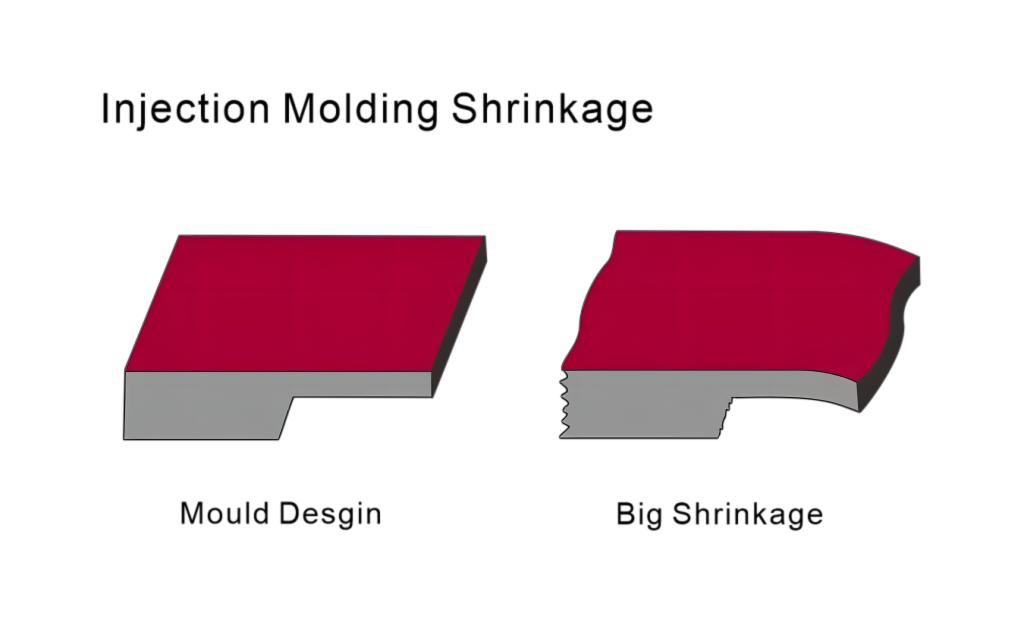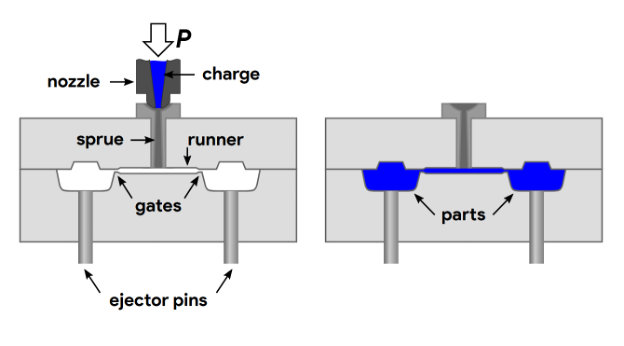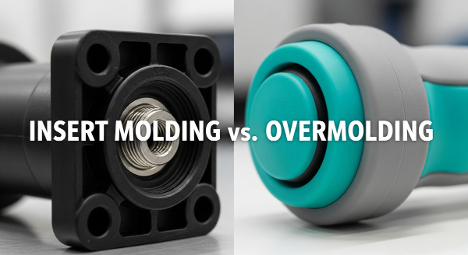Contents
Injection molding is a cornerstone of modern manufacturing, enabling the mass production of precise and complex plastic components. However, shrinkage is a critical aspect that engineers and manufacturers must contend with. Understanding and controlling shrinkage is vital for ensuring the dimensional accuracy and overall quality of the final parts. This article delves into the causes, effects, and mitigation strategies for shrinkage in injection molding.

What is Shrinkage?
Shrinkage in injection molding refers to the reduction in volume that occurs as a plastic material cools and solidifies within the mold. This phenomenon results in the molded part being smaller than the mold cavity. Shrinkage is an inherent characteristic of thermoplastic materials and can significantly impact the diemnsional accuracy and mechanical properties of the final product.
Causes of Shrinkage
- Material Properties: Different thermoplastics exhibit varying degrees of shrinkage. For instance, crystalline materials like polyethylene and polypropylene tend to shrink more than amorphous materials like polystyrene or polycarbonate. The molecular structure and thermal properties of the plastic influence how much it will shrink upon cooling.
- Cooling Rate: The rate at which the molded part cools can affect shrinkage. Rapid cooling can lead to uneven shrinkage and internal stresses, while slower cooling tends to produce more uniform shrinkage. The design of the cooling system within the mold is therefore crucial for controlling shrinkage.
- Mold Design: The design of the mold itself plays a significant role in shrinkage. Factors such as gate location, mold temperature, and wall thickness can influence how the plastic flows and solidifies, impacting the overall shrinkage pattern.
- Processing Parameters: Injection molding parameters, including injection pressure, holding pressure, and cycle time, can affect shrinkage. Higher injection pressures can reduce shrinkage by packing more material into the mold cavity, while the holding pressure can help compensate for material contraction during cooling.
Effects of Shrinkage
Shrinkage can lead to several issues in molded parts, including:
- Dimensional Variability: Parts may deviate from specified dimensions, leading to assembly issues or failing to meet tolerance requirements.
- Warping and Distortion: Uneven shrinkage can cause warping, where the part deforms from its intended shape.
- Internal Stresses: Differential shrinkage within the part can introduce internal stresses, affecting the mechanical properties and potentially leading to failure under load.
- Surface Defects: Shrinkage can cause surface imperfections such as sin marks, which occur when the material contracts more in thick sections than in thin sections.
Mitigating Shrinkage
- Material Selection: Choose materials with lower shrinkage rates for applications requiring high dimensional accuracy. Understanding the shrinkage characteristics of different plastics can help in selecting the appropriate material.
- Optimized Mold Design: Design the mold with uniform wall thickness and strategically placed gates to ensure even flow and cooling. Incorporating cooling channels that promote uniform cooling can also help reduce shrinkage.
- Controlled Cooling: Implement a cooling system taht allows for controlled and gradual cooling of the molded part. Using mold temperature controllers can help maintain consistent temperatures and reduce shrinkage variability.
- Process Optimization: Fine-tune processing parameters such as injection speed, holding pressure, and cycle time. conducting a Design of Experiments (DOE) can help identify the optimal settings to minimize shrinkage.
- Simulation Tools: Utilize computer-aided engineering (CAE) tools to simulate the injection molding process and predict shrinkage. These tools can help identify potential issues and optimize mold design and processing conditions before actual production.
Conclusion
Shrinkage is an unavoidable aspect of injection molding but with a thorough understanding and strategic approach, its effects can be minimized. By carefully selecting materials, optimizing mold design and processing parameters, and employing advanced simulation tools, manufacturers can achieve high-quality, dimensionally accurate molded parts. Addressing shrinkage effectively not only improves product performance but also enhances overall manufacturing efficiency and cost-effectivess.
HordRT injection molding service specializes in addressing shrinkage issues, providing high-quality, precision-molded parts. Through advanced equipement and technology, HordRT can precisely control the parameters of the injection molding process, ensuring consistency and reliability in the final product. With exrensive material knowledge and expert mold design capabilities, HordRT offers customized solutions tailored to meet customer needs.
-q4gvl4k29y4hq8j9rjpapvj0ft06fje63olt7p210i.png)


